Stepping into the famous ancient towns of Vietnam, visitors are not only lost in a space imbued with nostalgia but also have the opportunity to touch the golden pages of the nation’s history. Here, every moss-covered roof tile, every stone-paved road contains a story of old Vietnam, where culture and history blend together, creating a special, irresistible attraction. Let’s explore these unique ancient towns with “Du lịch khắp thế gian” (Travel Around The World) to fully appreciate the timeless beauty and profound cultural values they offer.
1. Dong Van Old Town: Pristine Beauty Amidst Ha Giang Stone Plateau
When it comes to famous ancient towns in Vietnam, Dong Van Old Town is a must-mention, a precious gem hidden in the heart of the majestic Ha Giang Stone Plateau. Located in the center of Dong Van district, this old town sits at an altitude of 1000 to 1600 meters above sea level, considered the most vibrant heart amidst the Ha Giang region, known for its pristine and tranquil beauty.
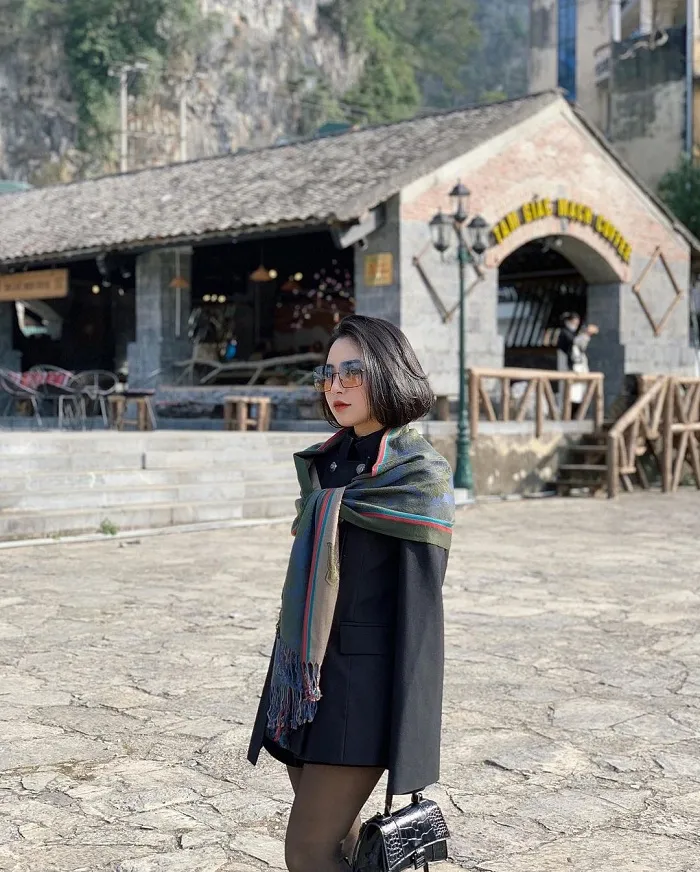
Dong Van Old Town was formed in the early 20th century, initially as a residence for the Mong, Tay, and Chinese ethnic groups. Over time, it gradually became a gathering place for many other ethnic groups such as Dao, Nung, Kinh…, creating a multicultural and multi-ethnic community, making the old town more crowded and bustling.

Coming to Dong Van Old Town, visitors will be amazed by the centuries-old houses, bearing bold ancient architecture, imbued with the color of time. The yin and yang tiled roofs, golden earth walls, shiny black lim wooden columns… all blend together, creating a space that is both ancient and familiar, rustic. In particular, the architecture here is also influenced by French style, reflected in the green wooden windows and small balconies, creating a unique cultural intersection.

Not only admiring the architecture, visitors can also experience the simple life of the locals, visit Dong Van market session every Sunday morning to immerse themselves in the bustling atmosphere, enjoy specialties such as Thang Co, Men Men, Chao Au Tau, corn wine… and buy unique souvenirs imbued with the highland identity. In the evening, Dong Van Old Town becomes shimmering and magical under the lantern lights, an ideal time for visitors to stroll, sip coffee, and fully feel the beauty of the old town at night.
2. Hanoi Old Quarter: The Soul of a Thousand-Year-Old Capital
Hanoi Old Quarter, one of the most famous ancient towns in Vietnam, is located in the East of the ancient Thang Long Imperial Citadel. Today, this ancient quarter is located in the North and West of Hoan Kiem district, an unmissable destination when exploring Hanoi capital. This place is not only a historical witness of thousand-year-old Thang Long – Hanoi but also an indispensable part of the vibrant life of the modern city.
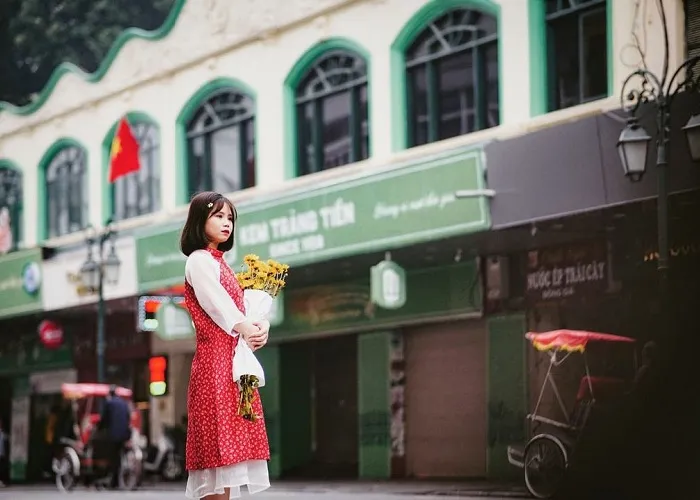
Hanoi is originally a capital land, a place where cultural quintessence from all over the country converges. Hanoi Old Quarter is a living proof of that, a place preserving traditional cultural values, unique architecture, and the elegant lifestyle of Hanoians. Hanoi Old Quarter has an area of about 100 hectares, including 76 streets, each street with its own characteristics, reflecting the history of formation and development of ancient Thang Long citadel.
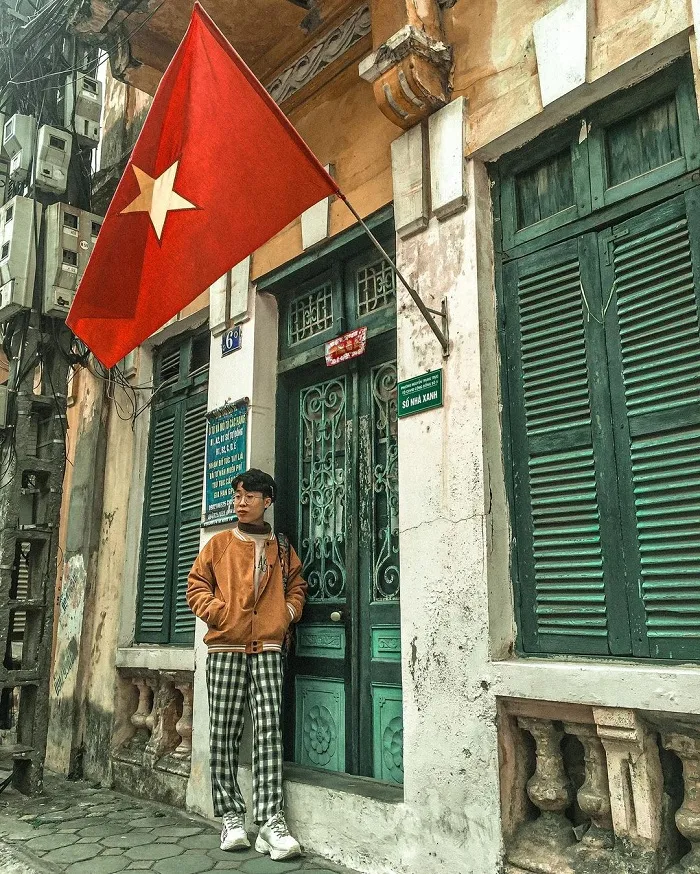
The streets in Hanoi Old Quarter are often named after traditional craft villages, with the word “Hang” (Goods) at the beginning, such as Hang Bong (Cotton Street), Hang Dao (Silk Street), Hang Gai (Hemp Street), Hang Ma (Paper Street), Hang Tre (Bamboo Street), Hang Thiec (Tin Street)… Each “Hang” used to specialize in selling a specific item, creating diversity and richness for the quarter. Today, although the craft villages are no longer as prosperous as before, the street names still evoke a golden age of Thang Long’s handicraft industry.
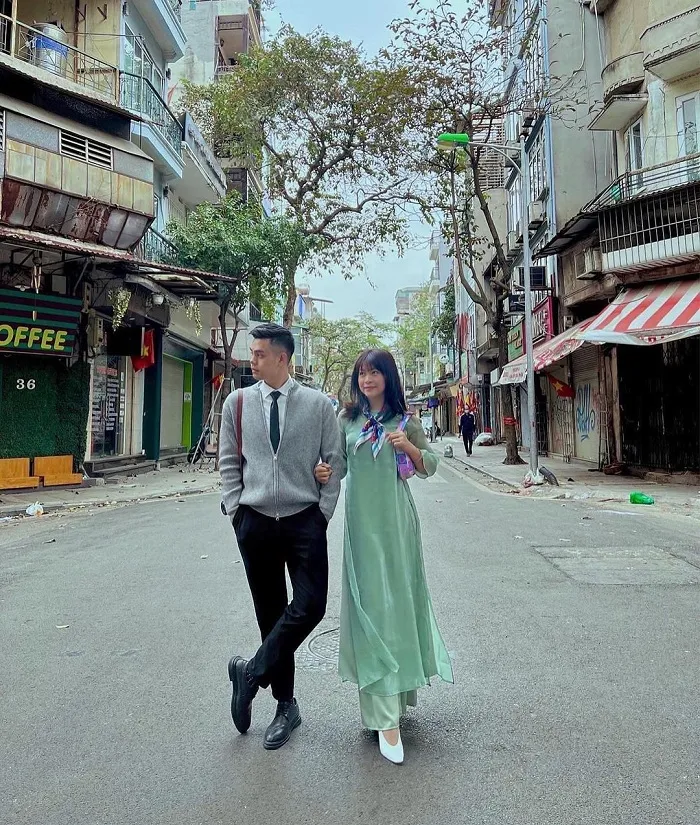
Walking in Hanoi Old Quarter, visitors will feel the intersection of past and present. The tube houses close together, moss-covered roofs, small deep alleys… still retain their ancient appearance. Besides, modern life still creeps into every corner of the street, with fashion shops, cafes, and restaurants in contemporary style. This harmonious combination creates a special attraction for Hanoi Old Quarter, making visitors fascinated and eager to explore. Visitors can enjoy rich street food, visit historical sites such as O Quan Chuong, Bach Ma Temple, or simply sit at a roadside stall, watching the bustling flow of people and feeling the rhythm of Hanoi life.
3. Hoi An Ancient Town: World Cultural Heritage by the Romantic Hoai River
Hoi An, perhaps the most familiar name when mentioning famous ancient towns in Vietnam. Not only a famous tourist destination of Vietnam, Hoi An Old Town is also a top-ranked ancient town in Asia, recognized by UNESCO as a World Cultural Heritage Site since 1999. Hoi An captivates visitors with its ancient, tranquil beauty, the blend of Vietnamese, Chinese, Japanese, and Western architecture, along with unique cultural, historical, and culinary values.
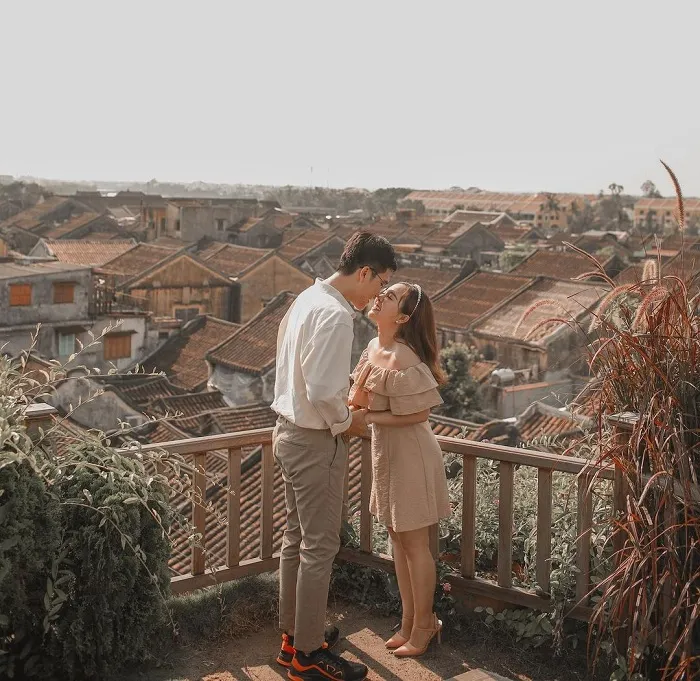
Hoi An Old Town is located along both banks of the Hoai River, a branch of the Thu Bon River, about 30km southwest of Da Nang city. This quarter was built from the 16th century and has been preserved almost intact to this day. In the past, Hoi An was the busiest trading port in Vietnam, a trading place for merchant ships from all over the world. The prosperity in the past has left Hoi An with a rich and diverse architectural heritage, expressed through ancient houses, assembly halls, communal houses, temples, pagodas…

Coming to Hoi An, visitors feel like stepping into a living museum of architecture and culture. The moss-covered tiled roofs, ancient yellow walls, shimmering lanterns, brilliant bougainvillea… create a colorful and romantic ancient town picture. Visitors can stroll along the small streets, admire the centuries-old houses, visit assembly halls bearing bold Chinese architectural imprints, such as the Fujian Assembly Hall, Guangdong Assembly Hall, or the Japanese Covered Bridge – a unique symbol of Hoi An.
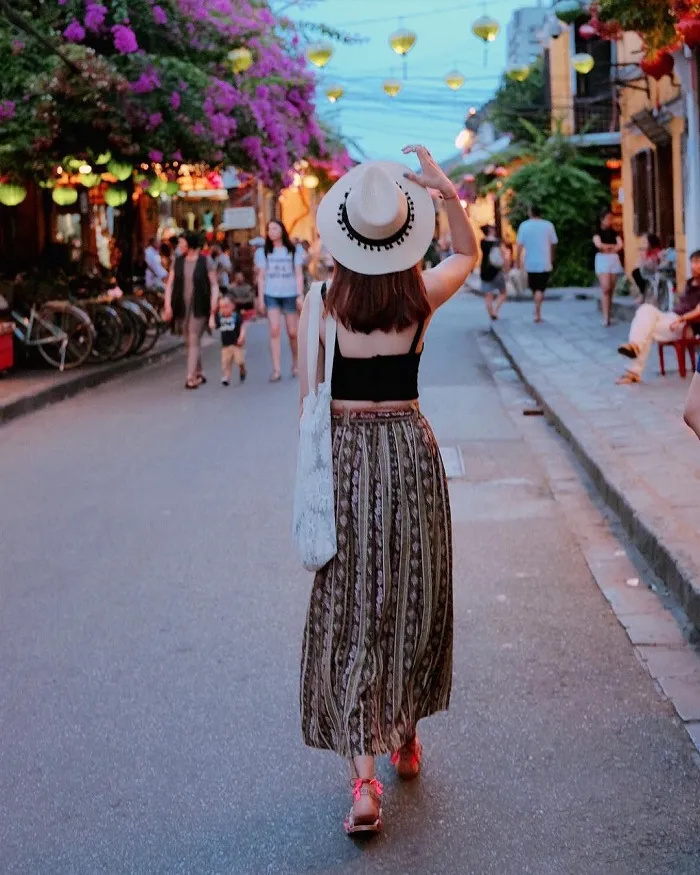
Hoi An Old Town is also famous for its diverse and rich cuisine. Visitors cannot miss specialties such as Cao Lau, Com Ga (chicken rice), Mi Quang (Quang noodles), Banh Mi Phuong (Phuong bread), Che (sweet soup), Tao Pho (tofu pudding), Hen Xao (stir-fried mussels), Banh Beo Chen (water fern cake)… Each dish carries the characteristic flavor of Hoi An, made from fresh ingredients and imbued with local identity.

Hoi An offers visitors a slow-living experience full of interest. Visitors can leisurely stroll, cycle, take a cyclo, or take a boat on the Hoai River to admire the old town from many different angles. In the evening, Hoi An Old Town becomes more shimmering and magical than ever, with thousands of colorful lanterns, creating an extremely romantic and memorable space.
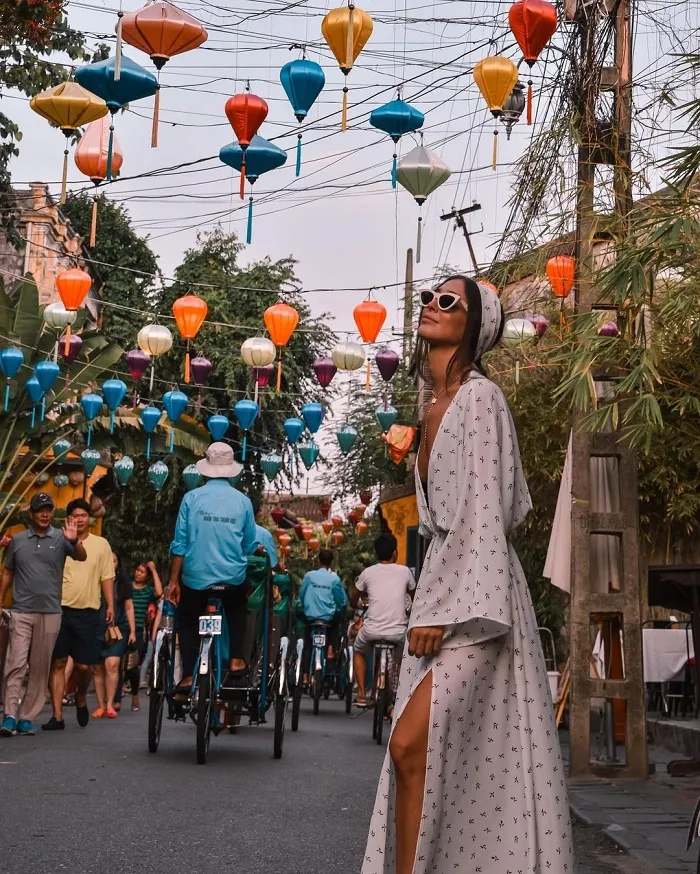
4. Bao Vinh Old Town: Imprints of an Ancient Trading Port by the Perfume River
Bao Vinh Old Town, one of the beautiful ancient towns of Vietnam, is located in the North of Hue Citadel, about 3km from the city center. This place was once the busiest trading port of the ancient capital of Hue in the 17th-18th centuries. Despite many historical upheavals, Bao Vinh Old Town still retains the ancient, tranquil beauty of a quarter that is more than 200 years old.
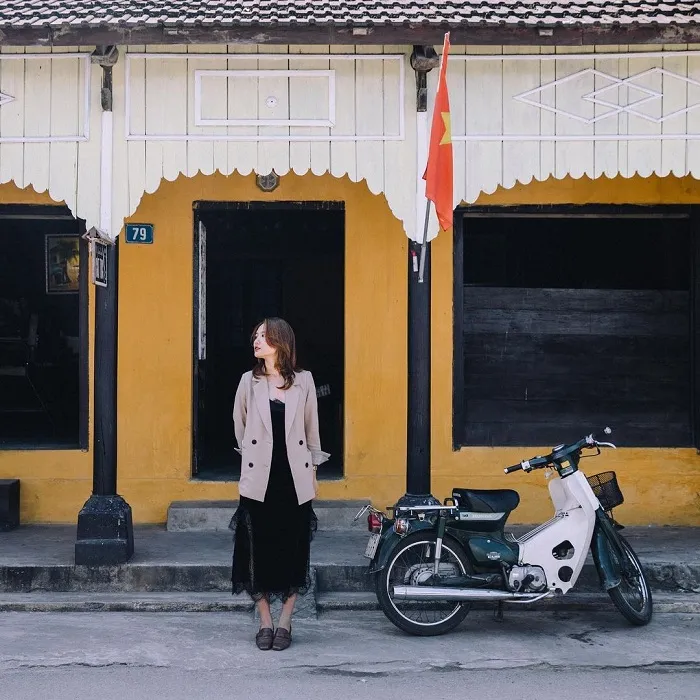
Bao Vinh Old Town was formed in the 17th century, once an important trading center, welcoming merchants from Japan, China, Macau, India, and Europe to exchange and trade. Along with commercial activities, Bao Vinh people also developed traditional craft villages such as brick and tile making, ceramic inlay, creating a diverse and rich economic and cultural community.

However, over time and the vicissitudes of history, Bao Vinh trading port gradually declined, and traditional craft villages also faded. Nevertheless, Bao Vinh people still try to preserve the old houses and old streets, as a way to commemorate the golden age of the old town. Thanks to its ancient and nostalgic beauty, Bao Vinh Old Town was chosen as the setting for the famous movie “Dreamy Eyes” by director Victor Vu, contributing to bringing the beauty of Bao Vinh closer to the public.

Today, Bao Vinh Old Town has a tranquil, peaceful beauty, completely different from the noise and bustle of the modern city. Visitors to Bao Vinh can stroll on deserted streets, admire ancient houses, moss-covered walls, and feel the quiet, nostalgic space of a bygone era. The intersection between ancient and modern creates a special beauty for Bao Vinh, making visitors feel moved and attached.
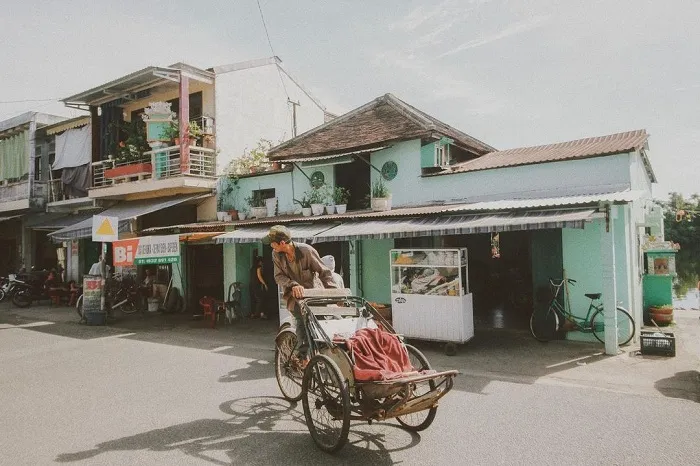
The famous ancient towns in Vietnam are not only attractive tourist destinations but also invaluable cultural heritages, places that preserve the soul of the nation. Each ancient town has its own beauty, its own historical story, but all share a common value: the crystallization of culture, architecture, and traditional Vietnamese lifestyle through generations. Take time to explore these ancient towns to feel the timeless beauty and love Vietnam and its people more.
*Tri Van (compiled) – Travel Around The World**Photos: Instagram*